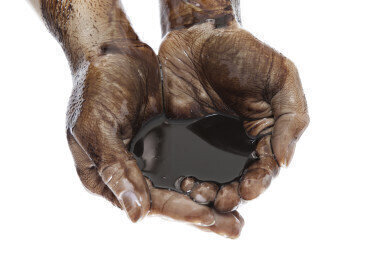Fuel for Thought
Introduction to the Four Categories of Crude Oil Toxicity
Dec 30 2014
When an oil well is drilled and pumped, the liquid petroleum harvested is commonly known as crude oil. Its composition is mostly carbon (approximately between 84% and 87%) and hydrogen (between 11% and 13%), with varying levels of helium, nitrogen, oxygen and sulphur. If you’d like to learn more about crude oil, take a look at how crude oil is formed or the different types of fuels that are made from crude oil.
More often than not, crude oils will be named by the producers based on their geographical location, such as the West Texas Intermediate and the Alaska North Slope. They are also classified depending on their chemical composition and physical characteristics.
A ‘sweet’ crude is a more desirable oil type as it contains low amounts of sulphur, whereas a ‘sour’ crude contains more. ‘Light’ crudes have a higher percentage of light hydrocarbons that can be distilled at a refinery which make them easier and less expensive to produce, while ‘heavy’ crudes contain high concentrations of bitumen, sulphur and other metals, and require additional refining processes to create high quality product.
Crude oil’s four toxicity categories
The toxicity level of a crude oil indicates the potential harm the oil may cause to the natural environment as well as humans and living organisms. Due to a history of oil spills and accidents, crude oils have been classified by the United States Environmental Protection Agency (EPA) to reflect the characteristics of the oil and how it may behave in the aftermath of a spill.
- Class A: Highly fluid, strong-smelling, and usually flammable, Class A oils are clear and volatile, and spread quickly across water and impervious surfaces. These oils evaporate quickly, emitting volatiles (chemical elements with low boiling points such as nitrogen, hydrogen, and carbon dioxide). Class A oils are known for penetrating porous surfaces such as sands and earths, and will often remain within these surfaces. These oils are harmful to humans and any living organisms that come into contact with them.
- Class B: A less toxic oil than Class A, these oils are less viscous but have a waxy or oily feel. As Class B oil heats up, it is more likely to soak into surfaces and is often extremely difficult to remove. When volatiles evaporate from these medium to heavy oils, the resulting residue can be a Class C or D substance.
- Class C: While the heavy, tarry oils in Class C are not highly toxic, they can be extremely difficult to dispose of once they have penetrated porous surfaces and can drown or smother wildlife. However, these brown or black medium to heavy oils do not readily penetrate surfaces and often take a long time to do so.
- Class D: Relatively non-toxic, these thick, heavy crude oils (including bitumen) do not tend to penetrate porous surfaces. When heated, Class D oils can melt and may coat surfaces which makes clean-up operations following a spill or leak a challenge.
Digital Edition
PIN 25.2 Apr/May
May 2024
Safety - Carbon monoxide toxic and flammable gas detection Analytical Instrumentation - Density: A fundamental parameter at critical stages within the petroleum sector - Advancements and...
View all digital editions
Events
May 19 2024 Minneapolis, MN
May 20 2024 Columbus, OH, USA
May 20 2024 Dubai, United Arab Emirates
May 23 2024 Beijing, China
May 23 2024 Beijing, China


















